Bicycle mounts on the wall: types, tips for choosing and installing
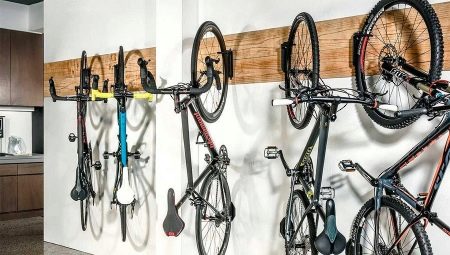
Today, the bicycle has gone beyond the scope of an alternative means of transportation and has become a full-fledged vehicle on which you can travel long distances. Together with the question of using the bike, the question arises of storing it with minimal damage to free space and comfort. In this article, you will familiarize yourself with information about wall mounts for a vehicle, with their varieties, installation features and tips for their installation.
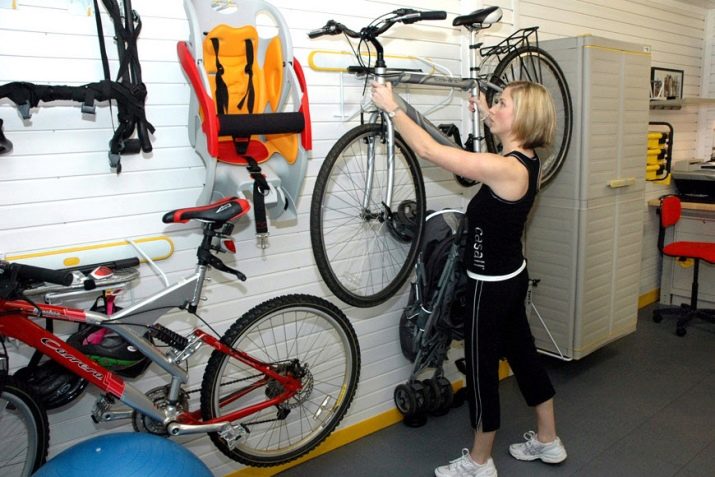
Mount types
Today, there are several types of bicycle racks, depending on the option chosen (vertical, perpendicular or under the ceiling), materials of manufacture and placement conditions. Usually, bike racks are installed in apartments with a lack of free space or in houses where there are no dedicated parking spaces or storage rooms.
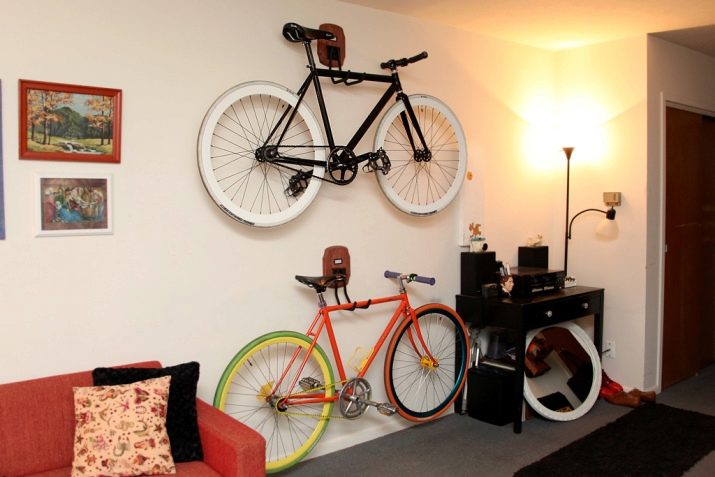
Hook
Hooks are considered the most common bike rack options. They allow you to save as much space as possible in the room. This type of fastening is the cheapest, and its installation will take only a few minutes. Standard mechanical hooks can handle up to 25kg, roughly 2 times the weight of a conventional steel mountain bike. Bracket type hooks, depending on the material of manufacture, can withstand up to 40 kg of weight.
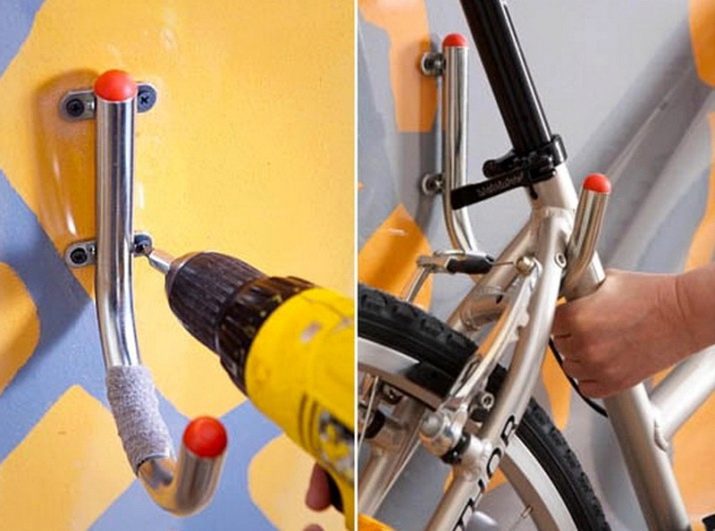
To install the hooks, the bike owner will need the device itself, the dowels, as well as elongated self-tapping screws on which it should be attached. As a rule, they should come with the purchased hooks.
There are several types of hooks depending on the type of attachment. When vertical suspension it can be a device for ceiling installation or hooks for vertical suspension. For horizontal mounting - single wall hooks, double hooks on the frame, and wall brackets with rubberized bike holders.
If we consider the materials for making bicycle hooks, then there are plastic and metal hooks.
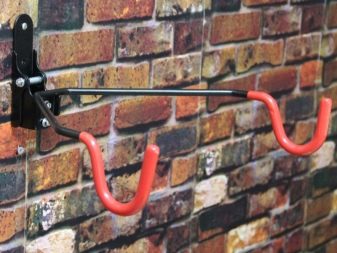
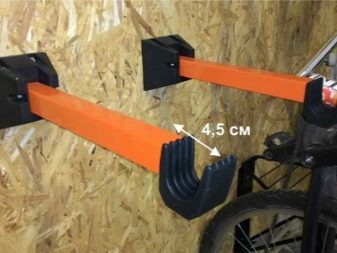
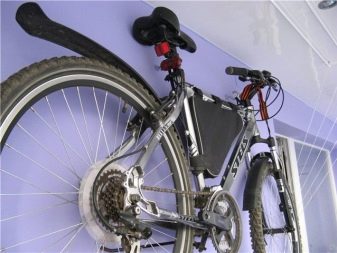
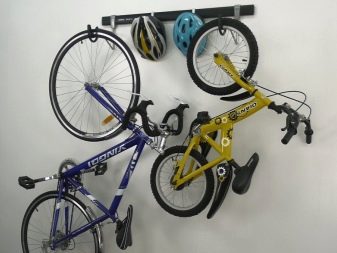
It is worth stopping your choice on metal hooks - they are more reliable, stronger and last longer.
Racks
Racks, unlike hooks, usually attached to the wall and resting on the floor... These are most often large-sized vertical structures with holders for several bicycles at once and hooks for storing bicycle accessories (helmet, pump, jacket). This mounting option rarely used in residential premises, since it takes up a lot of space, however, it can be effectively used in large apartments and private houses for two or more cyclists at once.
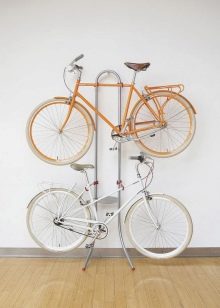
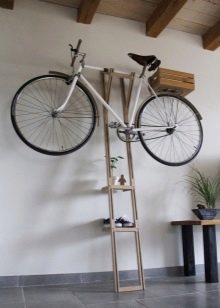
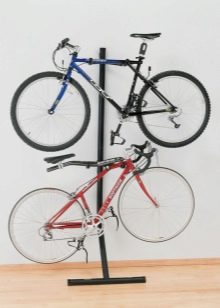
As a material for the manufacture of such racks, reinforced metal structures or reinforced versions of wood are used. Racks, unlike other types of fastening, can fit perfectly into a certain design or style of the room and even complement it. In addition, it is on the racks that the easiest way to carry out repair work on the bike, which will be an undoubted advantage for professional cyclists.
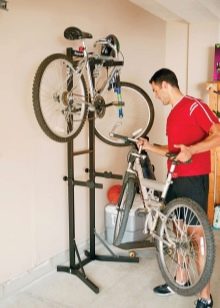
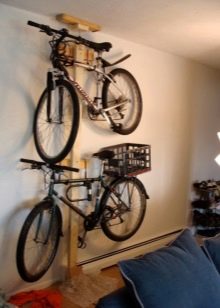
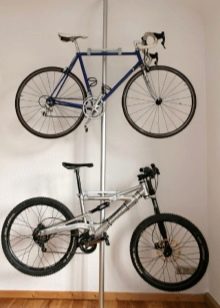
This option for fixing a bicycle is considered optimal in apartment buildings with wide entrances. There, bicycles can stand in racks under the supervision of CCTV cameras or a concierge. In addition, these racks can be equipped with special metal mounts for installing a bicycle lock.
Shelves
The shelf fixing method is ideal for those cyclists who are trying to give an aesthetic look to absolutely everything. Shelves can simultaneously perform several functions at once.
- Fixing. Thanks to their design, the shelves effectively keep the bike in suspension and prevent it from falling. This mounting method does not require complex installation and takes up a minimum of free space in a horizontal state.
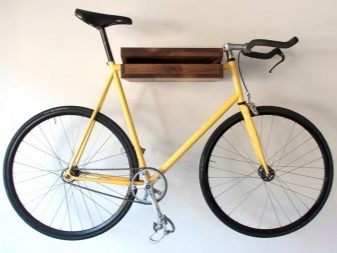

- Decorative. Modern bike racks can be made in an interesting design or painted in an original color. This allows you to effectively use them in certain style solutions.
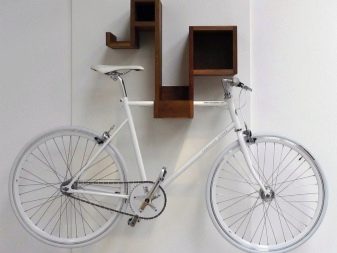
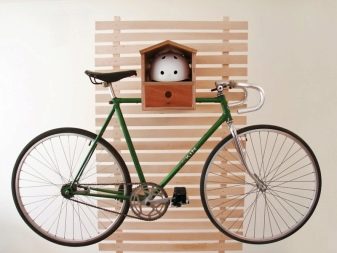
- Functional. If the lower part of the shelf performs exactly the fixing function, then the upper one often becomes a place for placing various household items. It can be both bicycle accessories and interior elements: books, flowers, watches or paintings.

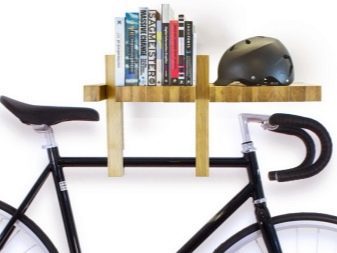
An obvious plus of this mounting option is that absolutely everyone can make the simplest wooden bicycle shelves with their own hands.
Bicycle racks can be of two types:
- wooden shelf for horizontal suspension of the bike under the frame;
- the shelf where the bike saddle carrier is installed.


It is the first option that is considered optimal, since the frame is the base of the entire bike and it is she who is responsible for the balance and fixation of your vehicle on the shelf.
Cabinets
Another option for fixing a bicycle indoors is installation in a specially prepared cabinet. An obvious plus of this option is that the cabinet can hold several bicycles at once, as well as all related bicycle accessories. In the free space of the closet, sportswear or household appliances are usually placed. Another plus of this mount is that the bike is out of sight and cannot spoil the interior of the room.
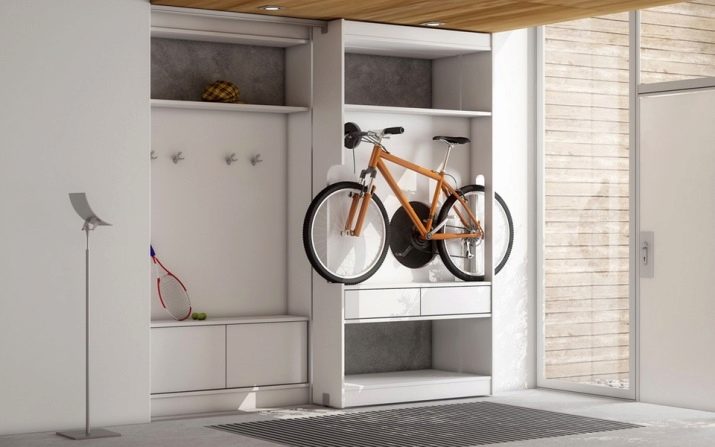
Such cabinets are most often installed not in living quarters, but on balconies (always insulated), in closets or in the hallway.
This design also has its drawbacks.
- Large dimensions. Regardless of the size of your bike rack, it will take up much more space than standard mounting options. Especially if the cabinet contains several units at once. That is why such structures are advised to be installed only by large families with spacious apartments.
- Price... Installing a complete bike rack will cost you a lot of money. For a full-fledged fastening of bicycle equipment, the cabinet must be made of strong and expensive materials. And there is also the option of installing a wardrobe without back walls and a floor, where bicycles will be attached to an open wall or simply stand on the floor without any support and fixation.
- Necessity of purchase... If all the above-described units for mounting a bicycle on a wall could have been made by you by hand, then you will have to buy a cabinet, and it will not be cheap.
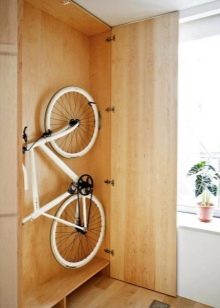
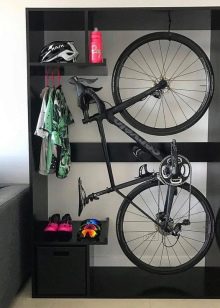
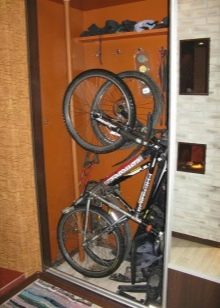
Mini bike holder
Unfortunately, bulky metal hooks, cabinets or shelves will not look harmonious in every apartment, and therefore screw mini-bike holders are gaining popularity lately. Such units best suited for minimalist apartments - they take up as little space as possible and are made of durable materials that can withstand up to 15 kg of weight.
Thanks to the U-shaped mount, these holders can be used to attach all components of the bike - frame, wheels, pedals or saddle.... Unlike other fastening units, mini bike holders perform exclusively as a fixing function and are not suitable for improving the interior of a room.

Fastener selection options
Once you have chosen the type of fastening that suits you, you should decide on the option of the fastener itself. Wherein the choice should depend on the material of the wall on which you want to mount the bike rack, the weight of the projectile or the structure of the mount, and the weight of the two-wheeled vehicle itself.
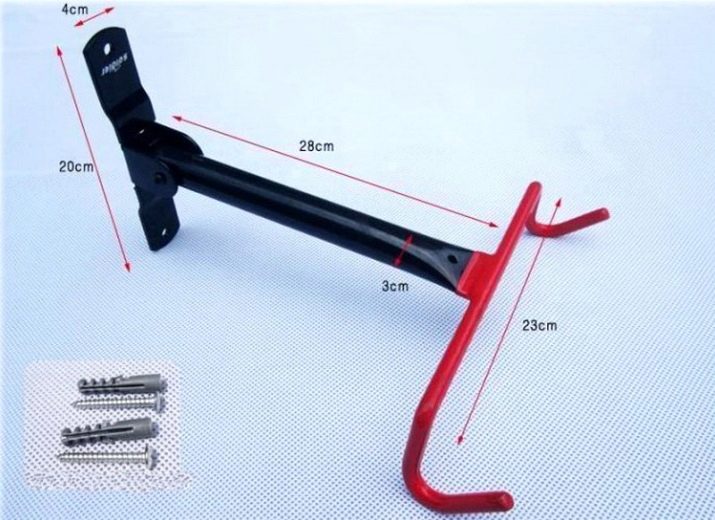
Wall material
The material of the wall on which your bike will be mounted is responsible for the safety of the mount itself and for the integrity of the wall. Each material has its own indicators of density, hardness and is more or less suitable for a certain type of fastening. If the walls in your room are wooden, then the best option would be to use a screw-type hook. If you have stone walls, then prepare the drilling tools for the procedure in advance - such walls will withstand any type of fastening.

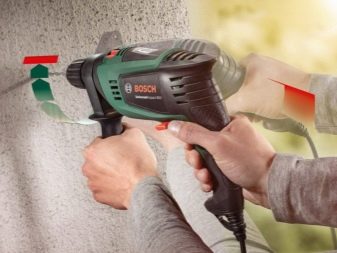
You should be especially careful about fixing your bike to drywall walls. This is the most unreliable material for fastening, but, unfortunately, the most common in apartment buildings. After repeated use, the drywall mount will weaken and your bike may just fall over. In rooms with such walls you should use a special device to search for load-bearing beams.


Projectile weight
The weight of the mount itself, in addition to the weight of your bike, also puts pressure on the wall material. The best option here would be the hook type. Such structures are the lightest (from 500 grams or more) and exert the least pressure on the wall. Metal mounts such as a bracket with rubberized handles are perhaps the most difficult mount option, as they can weigh up to 5-8 kg.
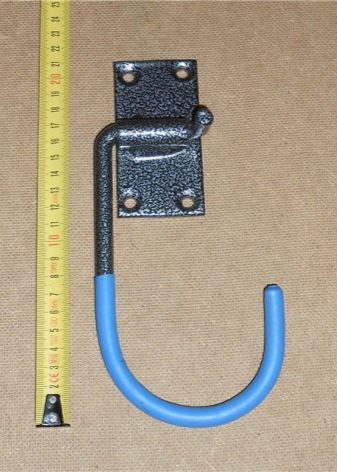
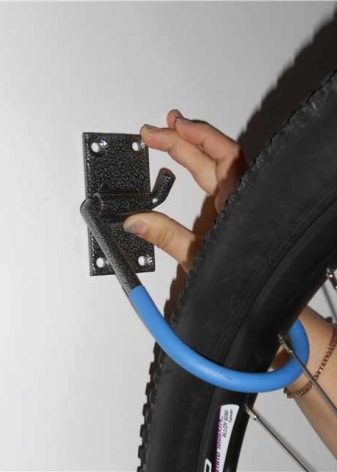
In terms of weight, the versatile mounting options for the bike are rack. They evenly distribute their weight, as well as the weight of the bike, between the wall and the floor, so that the wall mount is subjected to half the pressure.
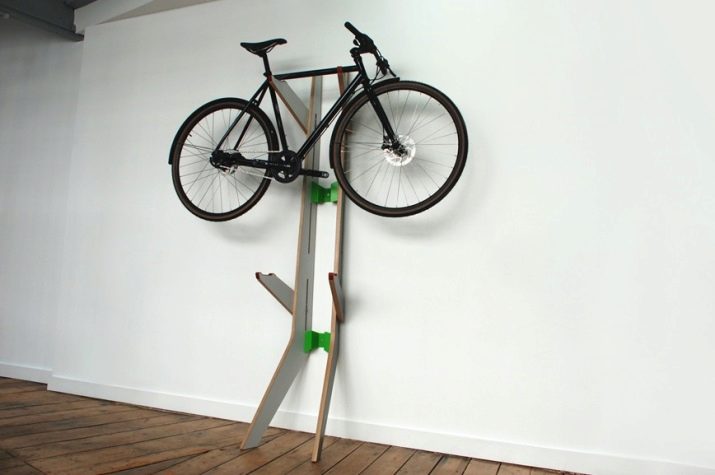
And also a good mounting option are shelves. They are made of wood and most often do not weigh more than 2-3 kg.
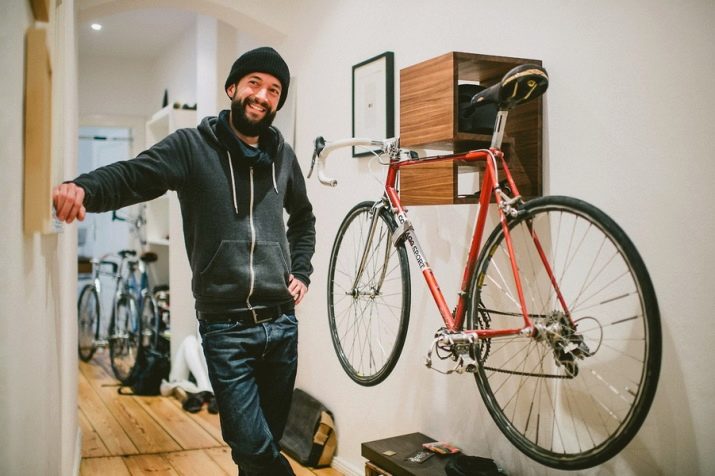
Bike weight
The weight of your two-wheeled friend affects both the type of mount and the ability to mount it on a wall of a particular material.
The weight of a bike primarily depends on the material used for the frame components. Today, 4 materials are most actively used.
- Low carbon steel. Not so long ago, it was the most common material in the manufacture of mountain and road bicycles. The very first bicycles were made precisely from steel frames - all thanks to the strength and reliability of this alloy. The downside of this material is its high weight, as well as the susceptibility of steel to corrosive processes.
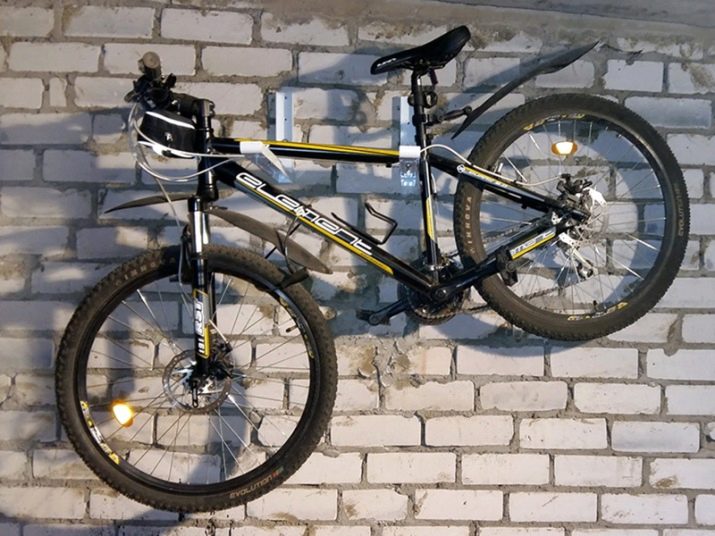
- Chrome-molybdenum steel. This material began to be actively used 20-30 years after the release of the first bicycles. It was much lighter than mild steel, but much more expensive. Today it is mainly used to make professional road bikes.
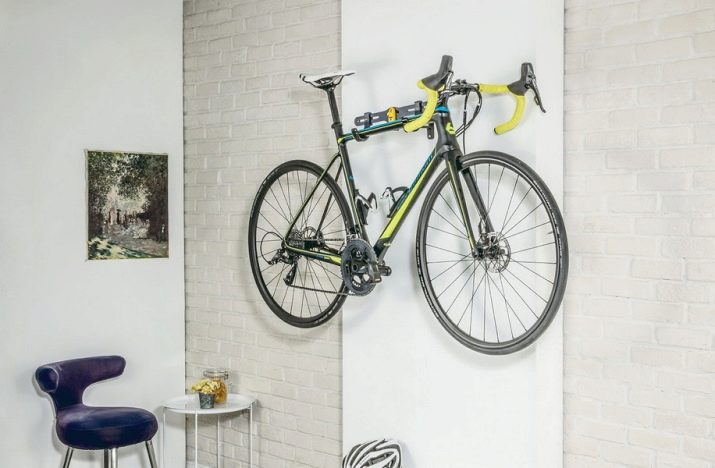
- Aluminum. Today the most popular material for making modern bicycles. It differs in a not particularly high cost (depending on the brand), low weight and good reliability.
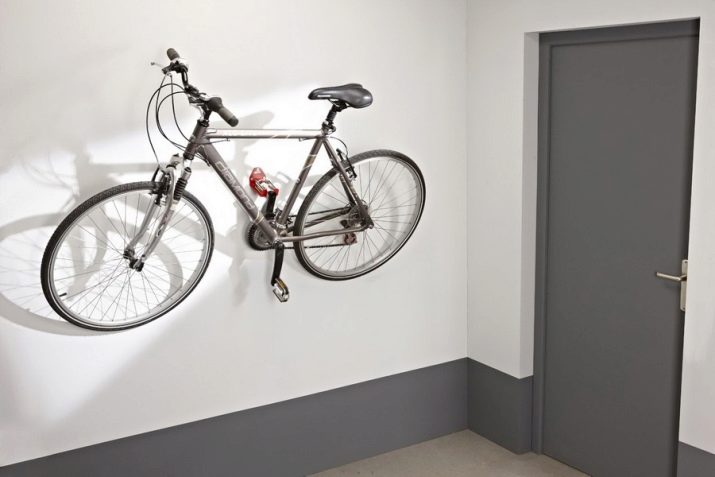
- Carbon. Carbon frames are considered premium in the cycling market today. They are distinguished by simply fantastic strength and relatively low weight. Unfortunately, carbon fiber models are very expensive and cannot be refurbished at the slightest breakdown.
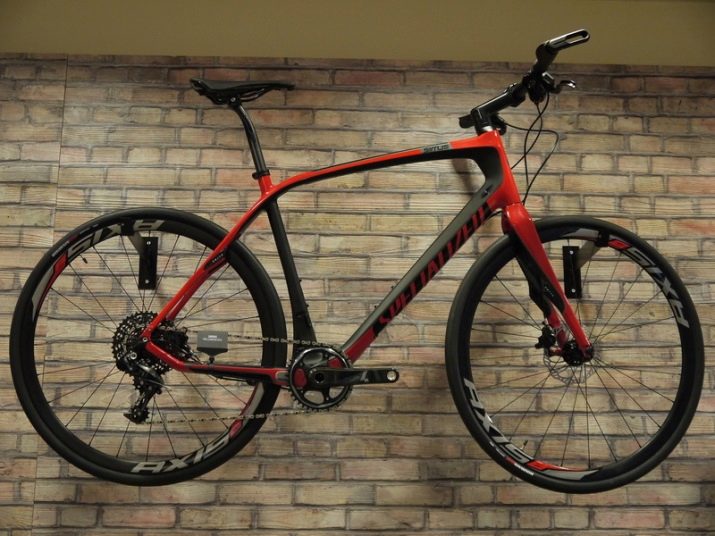
If we correlate the material for making a bicycle with the material of the walls, then it becomes clear that steel options are more suitable for stone and wooden walls, but it is better not to attach anything heavier than carbon or aluminum to drywall walls.
The approximate weight of a bike can also be determined by its type.... For example, road or road bikes typically weigh between 6.8 and 8 kg, mountain bikes typically weigh between 9 and 14 kg, and city bikes rarely weigh 10 kg.
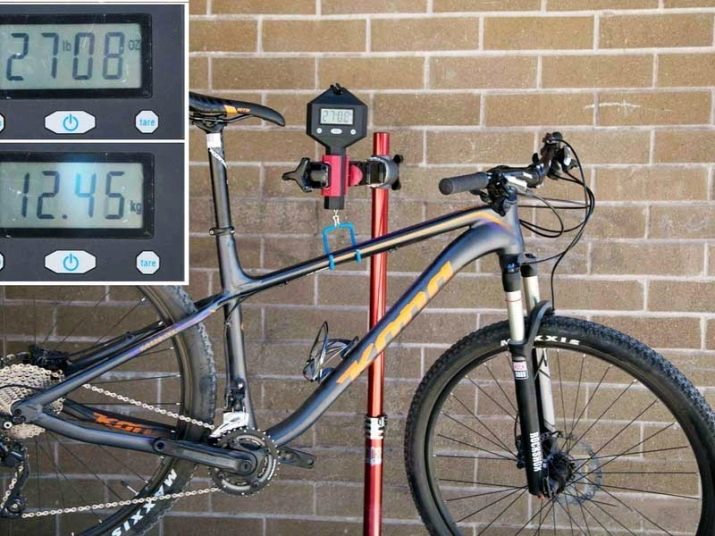
How do I secure my bike?
After you have decided on the type of attachment and the place for its installation, you should proceed with the attachment procedure itself. Most common There are only 3 ways to mount the bike to the wall: the frame is parallel to the wall, the frame components are perpendicular to the wall, and the mount is just under the ceiling. Each of the options will be discussed in detail below, as well as the fastening procedure itself.
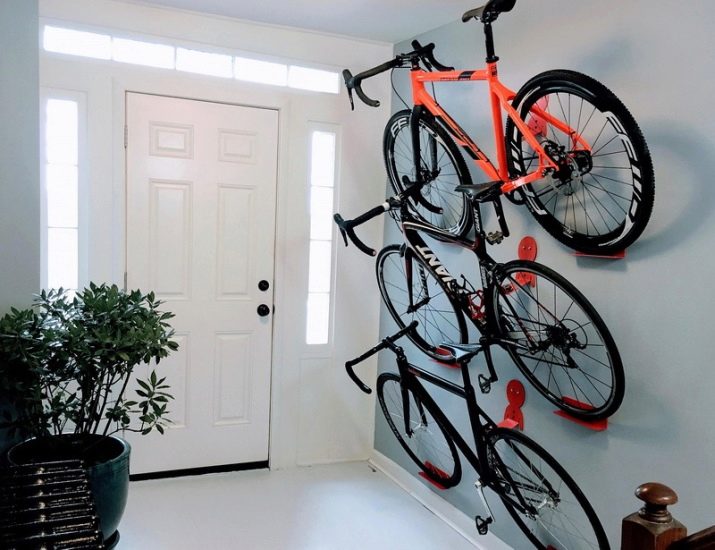
Frame parallel
This method of securing a bicycle is considered the most common, but not the most practical. In this case the bike should be suspended with the wheels downward and the frame components are installed parallel to the wall surface. From the point of view of comfort, this option is advantageous - the bike does not take up much space and becomes a full-fledged part of the interior. Besides, a bicycle from a parallel state is very easy to remove. This option is also suitable for attaching several bike units at once.
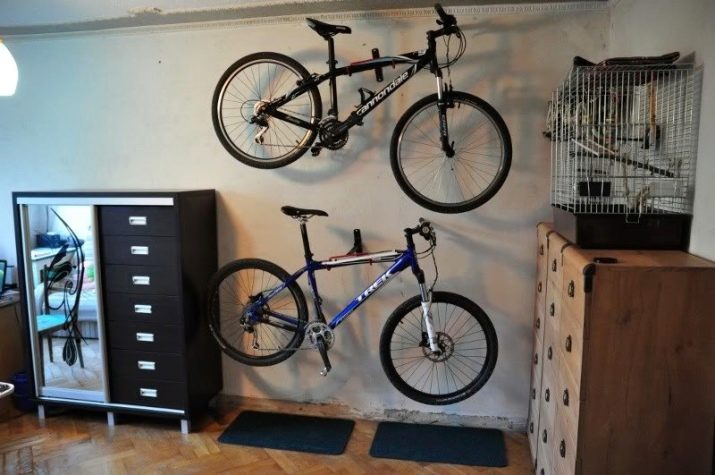
Frame perpendicular
In this case, the bike is installed on the fasteners vertically and perpendicular to the wall itself. Usually such a mount is installed precisely in the corners, wherever the bike sticks out and does not interfere with the passage. This option is considered very practical in small spaces with limited space.
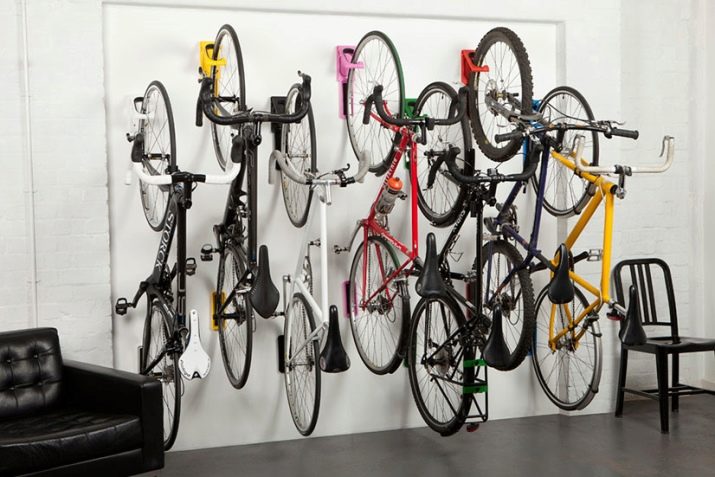
Under the ceiling
The best option in terms of practicality. In this case, the bike is placed on the rack directly under the ceiling, horizontal and parallel to the wall. Here, both hooks and brackets can be used as fasteners. Today, it is gaining popularity to attach bicycles to the ceiling using a special lift or ropes. This is the best option for mounting in rooms with high ceilings. All that is required from the owner of the unit is simply to remove the locking mechanism, lower the bike and pick it up from the hooks.
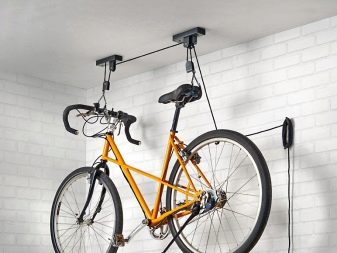
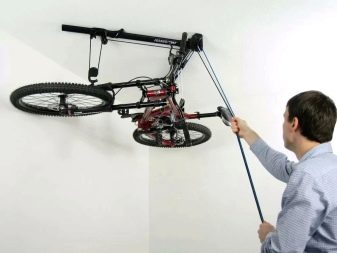
The attachment method may also differ depending on the selected bike component. Most often, it is the frame that is used to fasten and fix the bicycle - it allows you to effectively use the weight of the unit against itself. However, there are options for mounting the bike through other components. For example, when using hooks, it can be attached to the frame, pedals, bicycle wheel (or rim), to the handlebars. If you decide to use a shelf mount, you can tilt your bike with a saddle.
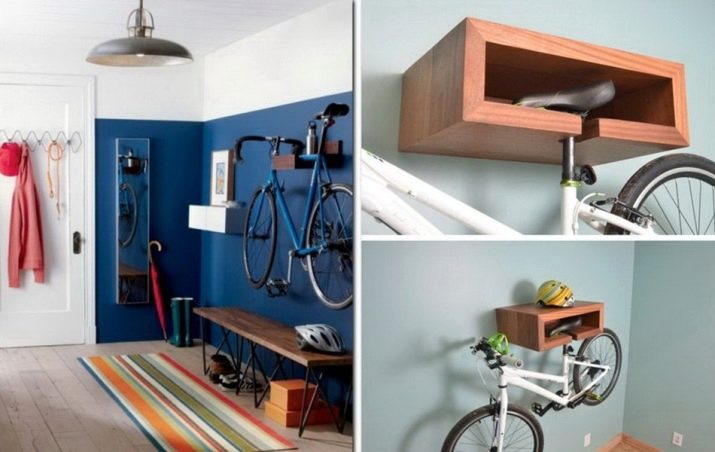
The following is a simple guide to attaching a bike rack to a hook.
- Choosing a suitable place for installation. It should be located away from furniture, electrical wiring, and should also be located at a suitable height (all these nuances will be described in more detail below).
- Using drawing tools, mark the locations of the mounting holes. When choosing the distance between the holes, be guided by the dimensions of the bicycle frame, as well as the distance between the bicycle components, which will be responsible for fixing in the future.
- Drill holes in the wall and place dowels in the wall depending on the type of fixing you choose and the weight of your unit.
- After installing the unit, secure it with self-tapping screws or screws.
- Once again check the reliability of the fastening of the self-tapping screws with a screwdriver after placing the two-wheeled unit on the mount.

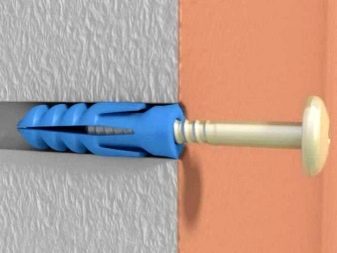
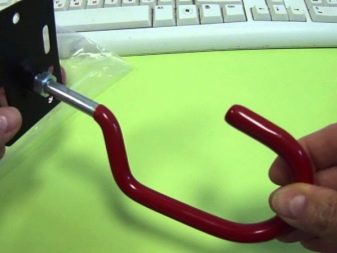
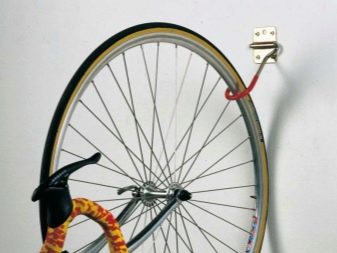
Common mistakes
It is not uncommon for cyclists to encounter errors when attaching their two-wheeled friend to the wall. The most typical ones will be discussed below.
Mounting height
Many bike owners do not pay any attention to such a factor as the height of the mount, which is a serious oversight. A bike that is too low is likely to constantly interfere with household members with its steering wheel, pedals or wheels (especially in tight spaces). If the bike is secured too high, there is a chance that if it falls, it will severely damage the flooring, furniture, or even harm your health.
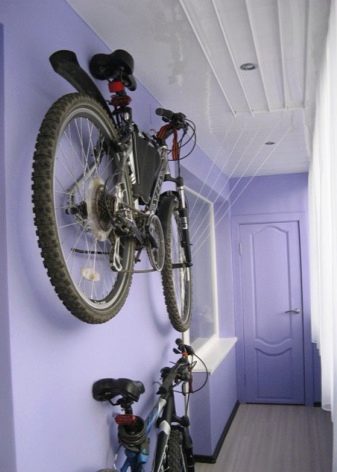
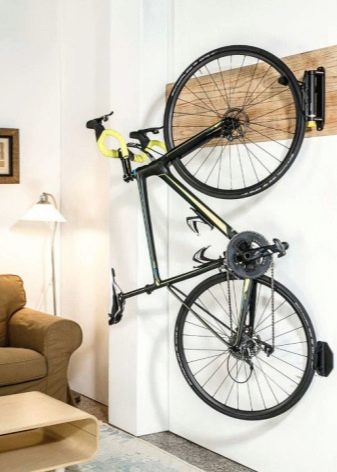
For example, placing a bicycle handlebar, pedals, or chain at eye and head level can cause serious injury to yourself and your family. Especially often, such situations occur at night, when a person is poorly oriented in space and may stumble upon everyday things. Try to adjust the height so that the piercing elements of your two-wheeled friend are above or below eye level.
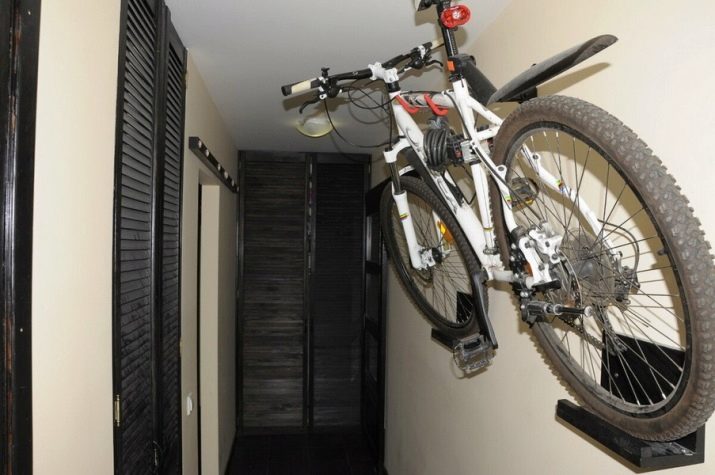
Mount the unit at a height where it will be more convenient for you to remove it, and where it will not interfere with nearby furniture.
Balcony storage
Many cyclists prefer to place their bike on the balcony. In their opinion, there it takes up as little space as possible and does not get in the way under the hands. The problem here is that the bike, when stored for a long time in a room with high humidity and cold, can simply break. Here we are talking about both the damage of the rubber itself, which can simply crack from frost (in non-inflated wheels), and about the corrosion of metal components.
Winter sun rays can also be dangerous, which can spoil your rubber - for this it is advised to buy special protective covers.
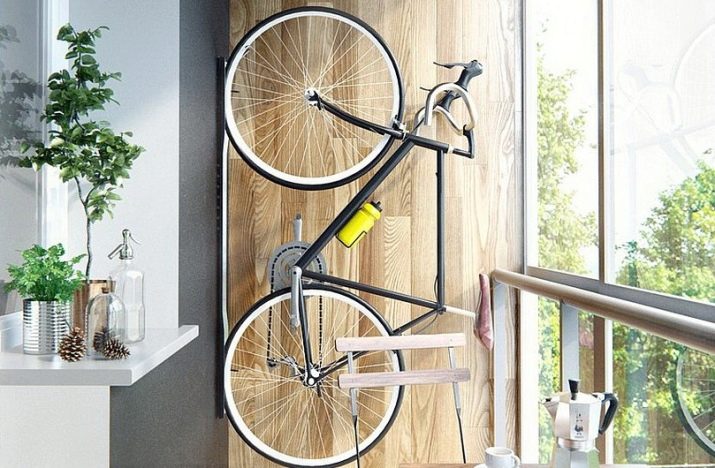
Installation of a bicycle unit on a balcony is only possible if it is glazed, well insulated and not subject to drafts.
Damage to appearance
Since most modern wall mounts are made from metal materials, there is an increased likelihood of damage to bicycle components from the mounts. For example, the bare metal hooks that will support and secure your bike frame can leave deep scratches and bumps on the frame. To prevent this from happening experts advise using special fabric substrates, covers, or buying rubberized fasteners in advance.

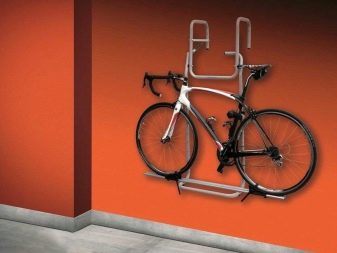
Wiring
When installing the fastener, many owners forget about such an important point as the wiring when installing the fastener. Before drilling holes and installing screws in them, make sure that there is no wiring in the vicinity of your location. To do this, you can use special detectors, or try to determine it with the help of improvised electrical devices.
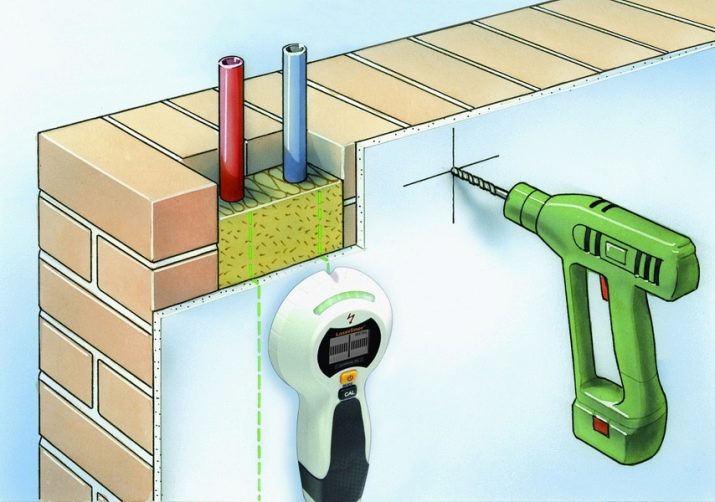
Prevent installation
In some apartment buildings with thin plasterboard walls, wall-mounting of large units is not permitted. Check with your chairman if your home is one of them.

Purity
Some owners resort to securing bicycles directly over appliances or furniture. In films, such options may look good, but in reality, this method should be abandoned. A bicycle is precisely a road vehicle that is regularly exposed to street sand, earth and mud.
For this reason When mounting a bike on a wall, experienced owners place special pads or mats under their wheels for dripping dirt and sand. The option of permanently washing bicycles is also possible, however, may damage the integrity of frame components and lead to corrosion.

For information on how to make a bicycle suspension shelf with your own hands, see the next video.








